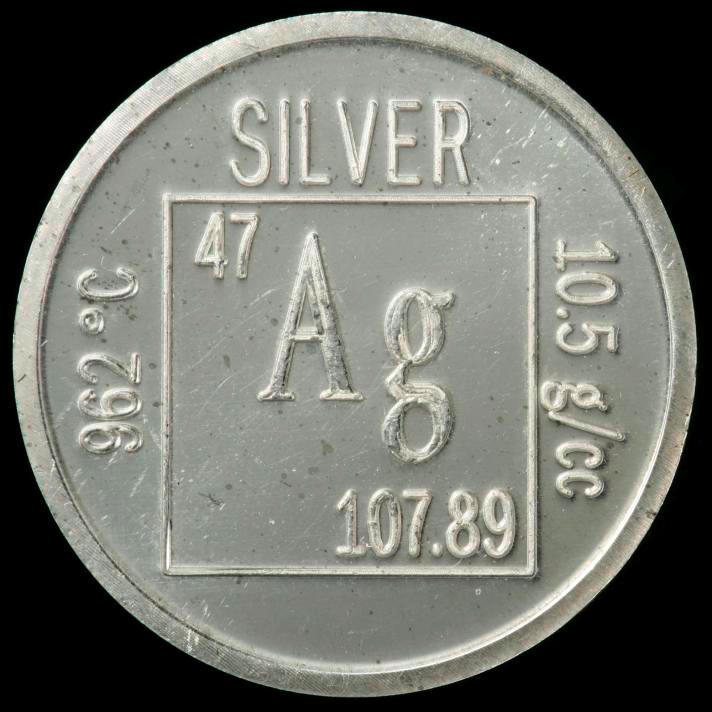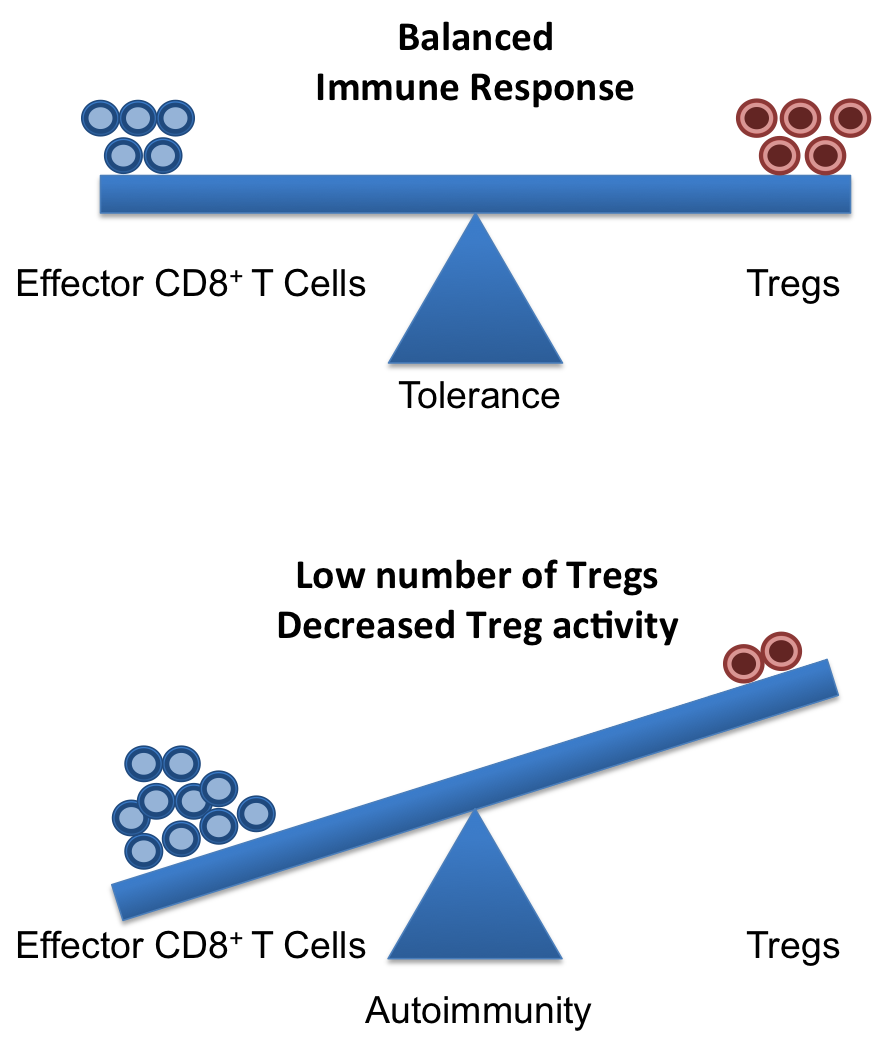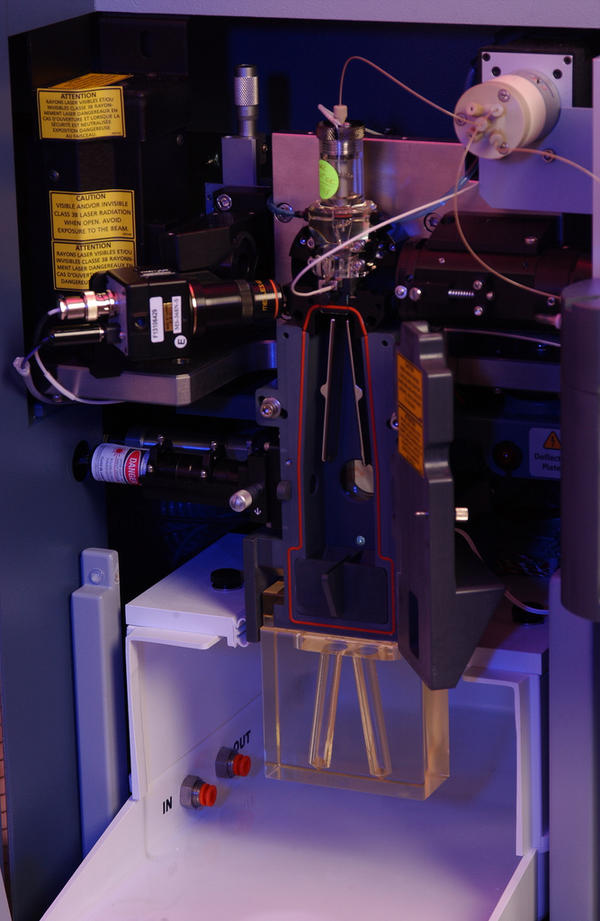The development of multi-resistant bacterial strains is a major medical problem, especially in hospitals. New antibiotics are constantly under development, but the success rate seems to have slowed down in recent years. However, two recent publications suggest that instead of finding novel antibiotics, an alternative strategy could be to increase the sensitivity of the bacteria to the antibiotics already in use. In the first report [1], the authors demonstrated that silver ions interfered with several metabolic pathways and increased the permeability of the cell membrane, both made the bacteria much more susceptible to antibiotics. The use of silver to combat bacteria is not unprecedented and actually has been used at least since Grecian times to treat wounds and to preserve water. However, with the advent of potent antibiotics in the 1940s their use fell out of favor.
In the first report [1], the authors demonstrated that silver ions interfered with several metabolic pathways and increased the permeability of the cell membrane, both made the bacteria much more susceptible to antibiotics. The use of silver to combat bacteria is not unprecedented and actually has been used at least since Grecian times to treat wounds and to preserve water. However, with the advent of potent antibiotics in the 1940s their use fell out of favor.
The authors uncovered two independent mechanisms of how silver is beating up bacteria. They studied E. coli a Gram-negative bacteria that is especially difficult to treat with many drugs due to its thick cell wall.
First, when exposed to silver ions the bacteria produced more reactive oxygen species (ROS). ROS are chemically highly reactive molecules that can bind unspecifically to close–by proteins and DNA and thereby irreversibly alter or damage those structures. Small amounts of ROS are constantly produced during several chemical reactions of the normal metabolism, but cell stress in any of its forms can greatly increase their production. The widespread damage that ROS can inflict weakens the cell and if the damage is too severe it can ultimately lead to cell death.
The second mechanism of silver is its ability to affect two metabolic pathways of the bacterial cells. On the one hand, the ability of the bacteria to maintain their iron level was disturbed. On the other hand, the formation of disulfide bonds, which are crucial for the structural integrity and function of many proteins, was affected in the presence of the silver ions. Both of these actions can be understood as severe forms of cell stress.
As a result of the ROS production and the metabolic impairment, the bacterial cell wall became more permeable. This is important as Gram-negative bacteria have a thick extra cell coating that prevents large molecules to enter. Many antibiotics are too big to enter through this bacterial cell wall, but the silver treatment allowed the antibiotic to enter the cells. By gaining access to the cell, the gram-negative bacteria became sensitive to large molecule antibiotics that usually work only with Gram-positive bacteria that lack such a thick cell coating. This finding greatly expands the arsenal of antibiotics that can be used against Gram-negative bacteria.
Importantly, bacteria that were weakened and made permeable by the silver ions became highly susceptible to even low amounts of antibiotics. The authors tested this in vivo with a mouse model of urinary tract infection. When the antibiotic treatment of the infected mice was supplemented with small amounts of silver ions, the silver greatly augmented the efficiency of the antibiotic: 10 fold to up to 1,000 fold. In one experiment, only 10% of the infected mice that were treated with the antibiotic alone survived, but when treated additional with the silver ions 90% survived!
This silver sensitization was also effective with two types of infections that are particular difficult to treat: dormant bacteria that remain inactive during the antibiotic treatment and rebound afterwards, and bacteria that produce slime layers, called biofilms. Biofilms can be visualized as huge amounts of extra coating produced by the bacteria that make them stick to surfaces (e.g. catheters in the clinic) and provides them with an extra shielding against antibiotics.
However, before somebody now starts grinding his silver spoons into his food, the caveat has to be noted that silver has some side effects: it can accumulate in your body, e.g. in the skin and when it is then exposed to sun can turn you into a smurf, quite literally, as the skin turns irreversible blue-grayish. The medical term is ‘Argyria’ and one stunning example is Paul Karason. Although the concentrations of silver used by Morones-Ramirez et al. were much lower, it still shows that the use of silver will likely be very limited in humans.
In a similar vein to the report by Morones-Ramirez et al., another recent study [2] showed that very high doses of vitamin C also could trigger the production of above-mentioned ROS in the bacterium Mycobacterium tuberculosis, the causative agent of tuberculosis. Thereby, vitamin C was able to kill the bacteria, either directly or in concert with antibiotics. Similar to the case above, the efficiency of the antibiotic was greatly increased when applied together with the vitamin C. However, starting to eat now vitamin C in bucket loads might be a bit premature too.

Nonetheless, both reports can be viewed as proof-of-principle studies. In both studies agents that by themselves are rather harmless to bacteria could massively increase their sensitivity towards antibiotics! Having established such potential it is likely that other substances will be described in the near future that are safer and still have this prominent potential to boost the efficiency of antibiotics.
References:
[1] Morones-Ramirez, J. R., Winkler, J. A., Spina, C. S. & Collins, J. J. Silver Enhances Antibiotic Activity Against Gram-Negative Bacteria. Science Translational Medicine 5, 190ra81–190ra81 (2013).
[2] Vilchèze, C., Hartman, T., Weinrick, B. & Jacobs, W. R. Mycobacterium tuberculosis is extraordinarily sensitive to killing by a vitamin C-induced Fenton reaction. Nat Commun 4, 1881 (2013).








 In
In 
 Gerhard
Gerhard


 In this first half of the two part blog, I will talk about the two reasons, namely unspecific binding and Fc-receptors, which most people think of when they talk about non-specific binding in flow cytometry.
In this first half of the two part blog, I will talk about the two reasons, namely unspecific binding and Fc-receptors, which most people think of when they talk about non-specific binding in flow cytometry.
